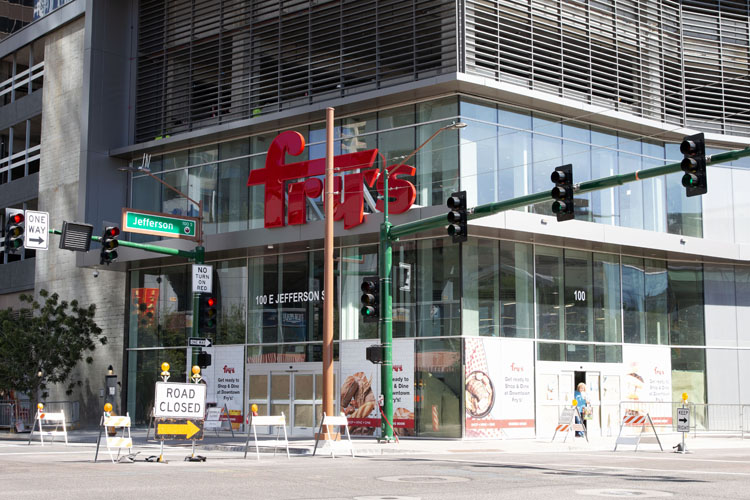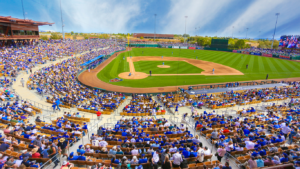Downtown Phoenix is home to two professional sports teams, a university campus and scores of apartment complexes and condos. But the crowded urban center of the nation’s fifth-largest city lacked a grocery store for residents and visitors.
The 8 a.m. grand opening of a Fry’s Food and Drug Store on Wednesday will mean downtown now longer will be a food desert for residents living within a 1-mile radius.
Food deserts in Arizona number about 700,000, according to U.S. Department of Agriculture estimates. Downtown residents waited decades for grocery store, even as older cities like Detroit and Dallas have downtown groceries alongside restaurants, dry cleaners, shops and other small businesses.
Ashley Oakes, who lives, works and attends school in downtown Phoenix, said the new grocery store at First and Jefferson streets will be convenient because it’s two blocks away from her job, apartment and Arizona State University’s downtown campus.
It also will reduce the environmental impact for downtown residents, she said.
“It’ll make residents who live down here be able to go shopping and be able to not take their car to go shopping,” Oakes said. “They can have a granny cart, go use their reusable shopping bags, and it’ll save time on traffic.”
Alana Rhone, an agricultural economist for the USDA, said in an email that Arizona ranks 14th in the nation for the highest number of census tracts that are low income and have low access to healthful, affordable food.
Three of those areas cover downtown Phoenix, Rhone said.
Chris Berryman, who will manage the downtown Fry’s, said the store means people in the area don’t have to grocery shop at a convenience store.
“It will cater to all parts of the neighborhood – the lower incomes, the upper incomes, the encompassing entire area will be able to utilize this grocery store,” he said.
The nearest full-service grocery store to downtown is Safeway near Seventh Street and McDowell Road.
Berryman said that the new store will bring the area out of a food desert, which the nonprofit group Downtown Phoenix celebrated in a tweet:
Food advocacy experts say living in a food desert increases the likelihood of obesity, diabetes and heart disease.
Distance from a grocery store and access to a car determine a food desert, according to the USDA website. The government calls it LILA – low-income residents coupled with low-access, or distance from a store. The formula is different for urban and rural areas.
Arizona still has a number of food deserts.
In Glendale, 5.6% of residents live in a food desert, according to the USDA. In one area from 83rd to 59th avenues, it has seven gas stations, four small markets that include a carniceria and an African market, a convenience store and a Walgreens – none a full-service grocery store selling fresh produce. Three Walmarts are the nearest stores.
But Chandler, according to the USDA, has plenty of grocery stores. It has two food deserts, affecting about 0.002 of households. Still, that’s more than 9,000 residents.
Story by Madison LaBerge, Cronkite News




